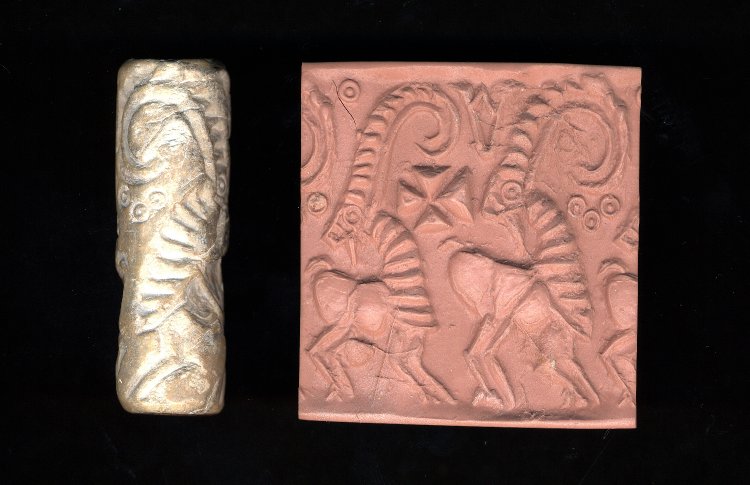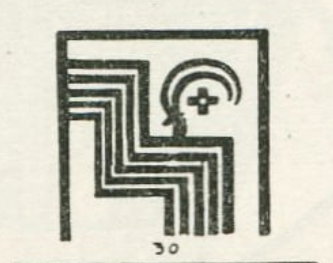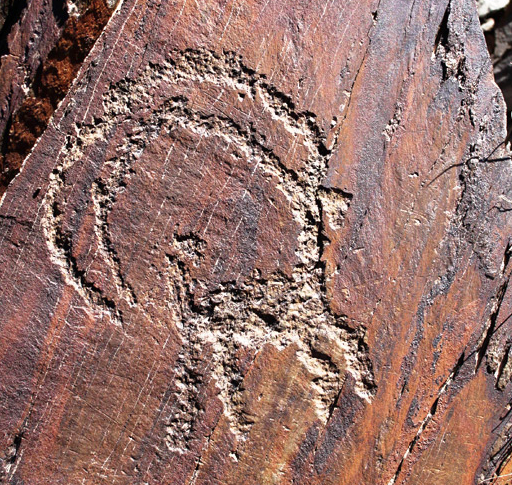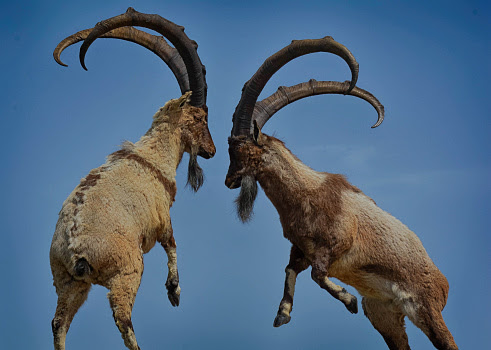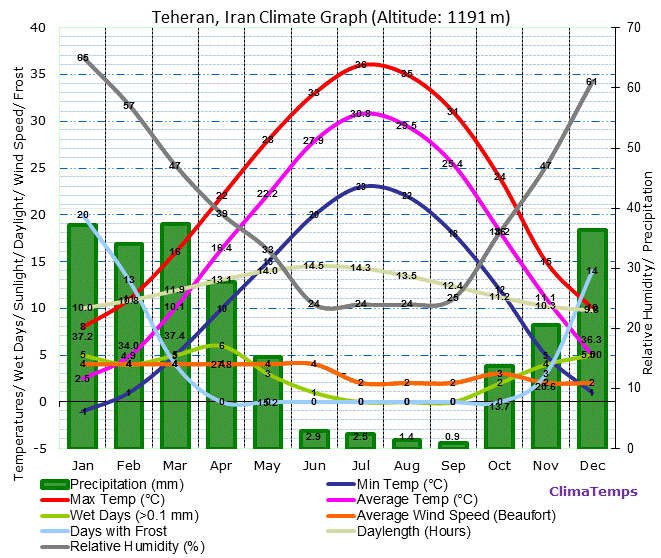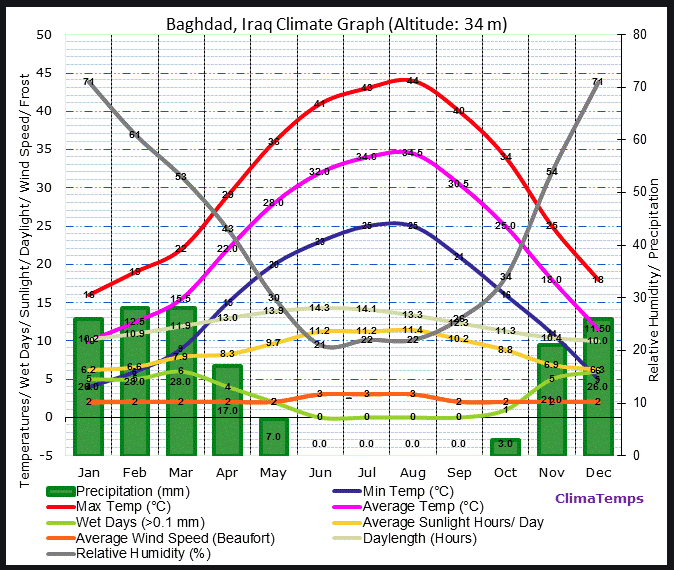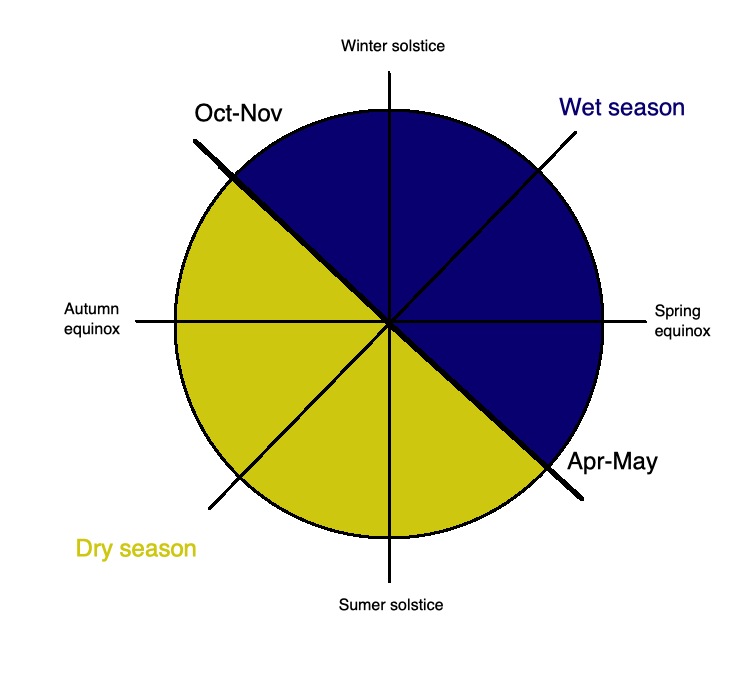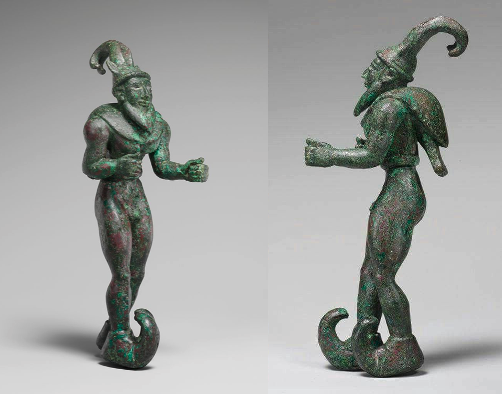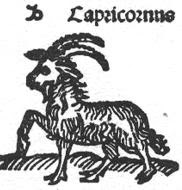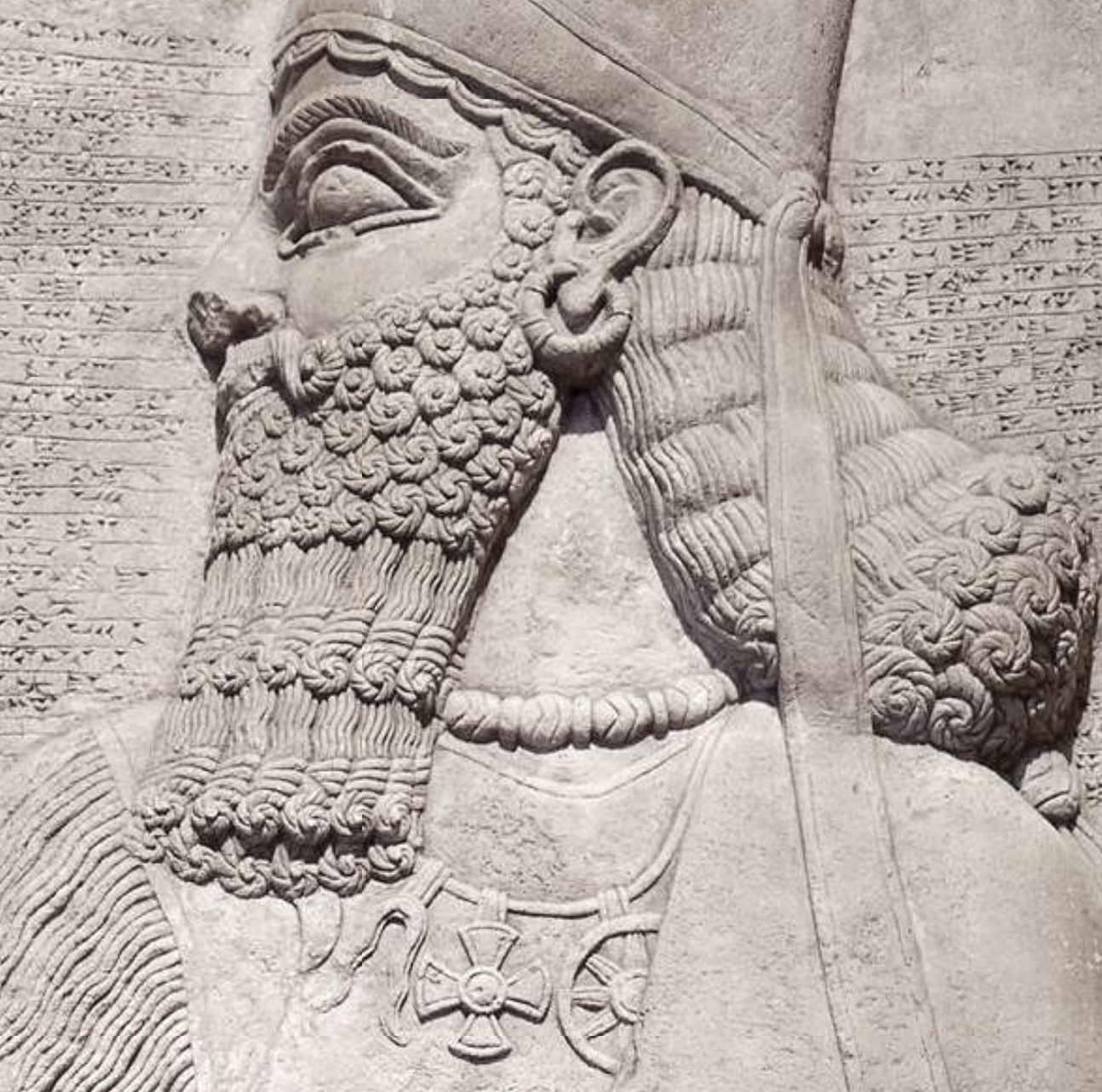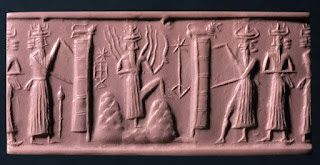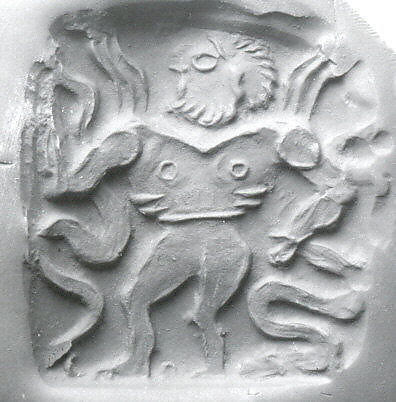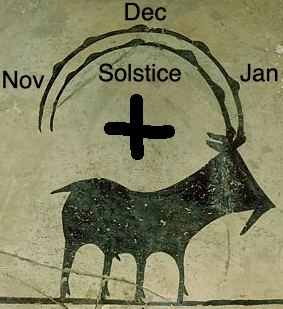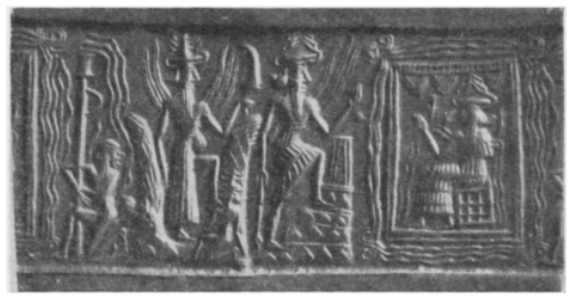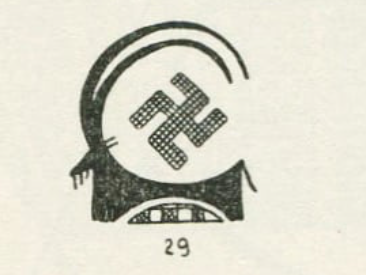The cross of Shamash (Krzyż Szamasza)
© by Goran Pavlovic © tłumaczenie Czesław Białczyński
Beaker, Sialk South Mound, Kashan, Isfahan, Late Calcolithic period, Sialk III7 period, ca. 3750-3350 BC, the National Museum of Iran, Tehran, Iran. Pic by Michele Mitrovich
Puchar, Kopiec Południowy Sialk, Kaszan, Isfahan, okres późnego kalkolitu, okres Sialk III7, ok. 3750-3350 p.n.e., Muzeum Narodowe Iranu, Teheran, Iran. Zdjęcie: Michele Mitrovich
Why are there crosses under Ibex goat horns?
Dlaczego pod rogami koziorożca znajdują się krzyże?
first asked this question in my post „Maltese cross seal from Elam” about this Proto-Elamite cylinder seal found in Jemdet Nasr and dated to 3100BC-3000BC.
po raz pierwszy zadałem to pytanie w moim poście „Maltańska pieczęć krzyżowa z Elamu” na temat tej protoelamickiej pieczęci cylindrycznej znalezionej w Jemdet Nasr i datowanej na lata 3100–3000 p.n.e.
At that time I wasn’t sure what the cross meant…
Nie byłem wtedy pewien, co oznacza ten krzyż…
The second time I asked this question was in my post „Iranian goat of rain” about the depictions of the Iranian Goat of Rain.
Drugi raz zadałem to pytanie w moim poście „Irański kozioł deszczowy” na temat przedstawień irańskiego Kozła Deszczu.
I still didn’t know what the cross under Ibex goat horns meant.
Nadal nie wiedziałem, co oznacza krzyż pod rogami koziorożca.
But I knew very well what the ibex goat represented. In Mesopotamia and in Iran, Ibex goat was the most depicted animal during Neolithic and Bronze Age…I talked about this in my post „Goat petroglyphs from Iran„…
Ale wiedziałem bardzo dobrze, co reprezentuje koziorożec. W Mezopotamii i Iranie koziorożec był najczęściej przedstawianym zwierzęciem w epoce neolitu i brązu… Mówiłem o tym w moim poście „Kozie petroglify z Iranu”…
Because in Mesopotamia and Iran rains arrive when Ibex goats start mating, in Oct/Nov…
Ponieważ w Mezopotamii i Iranie deszcze przychodzą, gdy kozy Ibex rozpoczynają krycie, w październiku/listopadzie…
Super important event, because it is the rain and snow that fall during the goat mating season that support life in Mesopotamia and Iran.
Niezwykle ważne wydarzenie, gdyż to właśnie deszcz i śnieg padający w okresie godowym kóz podtrzymują życie w Mezopotamii i Iranie
I talked about this in several of my posts: Problems of Abzu, Goatfish, Goat carrier, Iranian goat of rain, Strider, Goat petroglyphs from Iran, A vessel from Tepe Hissar
Mówiłem o tym w kilku swoich postach: Problemy Abzu, Kozia Ryba, Transporter kóz, Irańska koza deszczowa, Strider, Kozie petroglify z Iranu, Statek z Tepe Hissar
And many more…
I wiele razy więcej…
This is why Ibex was venerated in Iran, and this is why it is in Iran that we find the first Goat man…The earliest transition from Goat of rain to God of rain…
Właśnie dlatego w Iranie czczono koziorożca i dlatego właśnie w Iranie znajdujemy pierwszego człowieka-kozła… Najwcześniejsze przejście od Kozła deszczu do Boga deszczu…
Which eventually lead to Pan and Zeus, Thor, Perun, Perkunas riding on goats or goat pulled chariots…And to this…I talked about this in my post Goat in European culture
Co ostatecznie doprowadziło do tego, że Pan i Zeus, Thor, Perun, Perkunas jeździli na kozach lub na rydwanach ciągniętych przez kozy… I do tego… Mówiłem o tym w moim poście Koza w kulturze europejskiej
Anyway, considering how important rain was in Iran, I thought that maybe the cross under the horn of the Ibex goat just meant „VERY IMPORTANT!!!” 🙂 But then I learned that crosses like these were in Mesopotamia/Iran used as a symbol of the sun god (!)…
Tak czy inaczej, biorąc pod uwagę, jak ważny był deszcz w Iranie, pomyślałem, że może krzyż pod rogiem kozła / koziorożca oznaczał po prostu „BARDZO WAŻNE!!!”. 🙂 Ale potem dowiedziałem się, że takie krzyże były w Mezopotamii/Iranie używane jako symbol boga słońca (!)..
This version of the Sun God symbol combines a sun, cross (four seasons???), and wavy lines representing sun (heat) rays…
Ta wersja symbolu Boga Słońca łączy w sobie słońce, krzyż (cztery pory roku???) i faliste linie przedstawiające promienie słoneczne (ciepło).
I talked about this in my post „Canals„:
Mówiłem o tym w moim poście „Kanały”:
Sun God Utu/Shamash with sun (heat) rays emanating from his shoulders, standing in in an empty canal, in Leo (between the lions), the hottest, driest time of the year in Mesopotamia, and the time when canals were repaired, holding reed cutting knife…
Bóg Słońca Utu/Szamasz z promieniami słońca (ciepła) emanującymi z ramion, stojący w pustym kanale, w Lwie (między lwami), w najgorętszej i najbardziej suchej porze roku w Mezopotamii oraz w czasie naprawy kanałów, trzymając nóż do cięcia trzciny…
And in my post „Nude winged hero dominating snakes„:
Oraz w moim poście „Nagi skrzydlaty bohater dominujący nad wężami”:
This is 3rd millennium BC, Bactrian seal depicting the sun god (see heat rays emanating from his shoulders) holding snakes, symbols of sun’s heat…See snakes, Solar animals number one, the symbols of sun’s heat…
Jest trzecie tysiąclecie p.n.e., pieczęć dwugarbna przedstawiająca boga słońca (patrz promienie ciepła emanujące z jego ramion) trzymającego węże, symbole ciepła słonecznego… Zobacz węże, zwierzęta słoneczne numer jeden, symbole ciepła słonecznego…
So how does this fit together?
Jak to się ma do siebie?
The Ibex goat mating season in Mesopotamia/Iran spans the whole of winter, Nov,Dec,Jan. And in the middle of the Ibex goat mating season is the Winter Solstice…The (re)birth of the new sun (solar year)…
Okres godowy kóz Ibex w Mezopotamii/Iranie trwa przez całą zimę, listopad, grudzień, styczeń. A w środku okresu godowego kozy Ibex następuje przesilenie zimowe… (ponowne) narodziny nowego słońca (roku słonecznego)…
Is this why cross, the symbol of the sun god, was placed under the horns of an Ibex goat, the animal calendar maker (symbol) for winter?
Czy dlatego krzyż, symbol boga słońca, umieszczono pod rogami kozy koziorożca, zwierzęcego kalendarza (symbolu) na zimę?
Early Mesopotamians/Iranians definitely had a notion of young and old sun…I talked about this in my post „Shamash young and old„:
Wcześni Mezopotamczycy/Irańczycy zdecydowanie mieli pojęcie o młodym i starym słońcu… Mówiłem o tym w moim poście „Szamasz młody i stary”:
When I am young, I fill the rivers with water. When I am old, I dry them…Utu/Shamash, young and old…
Kiedy jestem młody, napełniam rzeki wodą. Kiedy jestem stary, suszę je… Utu/Shamash, młody i stary…
And I talked about it in my post „Descending to Hades„:
I mówiłem o tym w moim poście „Zejście do Hadesu”:
The Sumerian poem „Enki and the World Order” exclaims: Young Utu (the sun), father of the Great City (the realm of the dead)…Young Utu here meaning both morning sun and spring sun…
Sumeryjski poemat „Enki i porządek świata” woła: Młody Utu (słońce), ojciec Wielkiego Miasta (królestwa umarłych)… Młody Utu ma tutaj na myśli zarówno poranne słońce, jak i wiosenne słońce…
So this is why I think we see cross depicted under Ibex goat horns. BTW, for people who still doubt if swastika is a sun symbol. Another Neolithic Iranian goat of winter with swastika under its horns where sun cross usually is…
Dlatego myślę, że widzimy krzyż przedstawiony pod rogami koziorożca. Przy okazji, dla ludzi, którzy nadal wątpią, czy swastyka jest symbolem słońca. Kolejna neolityczna irańska koza zimowa ze swastyką pod rogami, gdzie zwykle znajduje się krzyż słoneczny…


